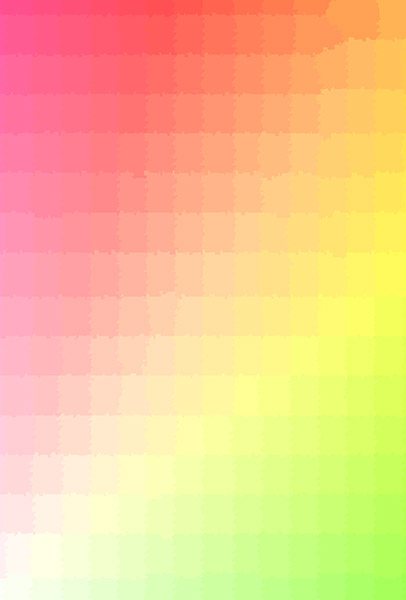Ascension
Garrett Johnson
In a race to ascend to the rank of god, players control a group of souls from a fallen civilization to unearth enchanted artifacts, manipulate terrain, and hinder opposing civilizations.


Objectif, I'm So Glad You Came, Settlers of the Darke Trail, Grave Golf
Current Project:?????
What are you doing now?:??????
Favorite Games:?????
Favorite food:?????
Hobbies:?????
Favorite Place on Earth or Elsewhere:?????

Objectif, I'm So Glad You Came, Settlers of the Darke Trail, Grave Golf
Current Project:?????
What are you doing now?:??????
Favorite Games:?????
Favorite food:?????
Hobbies:?????
Favorite Place on Earth or Elsewhere:?????

Nidhogg 1 & 2 (weapon based tug-of-war fighting games) and Flywrench (hardcore abstract platformer)
Current Project:Not ready to talk about it yet but it's something I've been wanting to make for a long time
What are you doing now?:Working on some new projects in new dimensions
Favorite Games:Pubg, rainbow six siege, sekiro, stardew valley
Favorite food:Grandma style pizza, yakitori, bbq, sushi
Hobbies:Eating food, riding bikes
Favorite Place on Earth or Elsewhere:Can't beat the internet

Objectif, I'm So Glad You Came, Settlers of the Darke Trail, Grave Golf
Current Project:?????
What are you doing now?:??????
Favorite Games:?????
Favorite food:?????
Hobbies:?????
Favorite Place on Earth or Elsewhere:?????

A new project at ustwo games. Stay tuned!
Describe what you are doing now?:After my time as artist in residence at UCLA Game Lab I finished my studies at Filmacademy Baden-Württemberg. I worked as game designer for flaregames on f2p projects and as a freelance game designer and illustrator for various cultural clients. On the side I was involved as speaker, jury member and curator at events like GDC and A MAZE. and sometimes taught at Universities like Geneva University of Art and Design and Stuttgart Media University. Since 2014 I am with ustwo games in London, where I contributed as Senior Game Designer to Monument Valley 2.
Favorite Games:Little Inferno, Overcooked, Florence
Favorite food:Maultaschen (German dish, similar to very big ravioli filled with meat and vegetables)
Hobbies:Cooking, drawing and going for walks in nature
Favorite Place on Earth or Elsewhere:Anywhere where you don’t hear the noise of civilisation. As examples I remember Joshua Tree National Park, a small beach in Corsica, the mountains of the Alps.

Objectif, I'm So Glad You Came, Settlers of the Darke Trail, Grave Golf
Current Project:?????
What are you doing now?:??????
Favorite Games:?????
Favorite food:?????
Hobbies:?????
Favorite Place on Earth or Elsewhere:?????

Objectif, I'm So Glad You Came, Settlers of the Darke Trail, Grave Golf
Current Project:?????
What are you doing now?:??????
Favorite Games:?????
Favorite food:?????
Hobbies:?????
Favorite Place on Earth or Elsewhere:?????

Objectif, I'm So Glad You Came, Settlers of the Darke Trail, Grave Golf
Current Project:?????
What are you doing now?:??????
Favorite Games:?????
Favorite food:?????
Hobbies:?????
Favorite Place on Earth or Elsewhere:?????

Ascension, ProtoSpace, OnSight, Foundry IME
Current Project: Honeycomb:A 3D visualization platform for debugging and understanding the behavior of autonomous swarms of robots.
What are you doing now?:I design and develop tools used to model and operate a variety of NASA spacecraft at JPL, including the upcoming Mars 2020 rover and Europa Clipper missions.
Favorite Games:Metroid Prime, Bioshock, Hyperlight Drifter
Favorite food:Sushi
Hobbies:Hydroponic Gardening, Cooking, Open Source Software
Favorite Place on Earth or Elsewhere:Southern Island of New Zealand

N/A
Notable Projects:Beamtimes and Lifetimes ♠♥♦♣ The Card Game, EPOCH 5: Paradigm Shift, Road Story, Roulette, Perfect Woman, Cat Game, Kubisch, Burn & Turn, Cave
Current Project:I'm working on a game called potato game. I really love emergent game play in multiplayer games, I want to create a game that expands upon that, and challenges what is typically accepted in an MMO and subverts some of those assumptions, and see what kind of new emergent gameplay can come out of that. I am working on a very distilled but complete version of my dream project, which is just going to be a game about breeding animals, and building houses for them; hoarding animals.
What are you doing now?:I got booted out of the games industry for speaking up too much so now I'm working at a blockchain company.
Favorite Games:Cave Story, Minecraft, Dungeon Crawl Stone Soup
Favorite food:Mom's Cooking
Hobbies:Growing Mushrooms
Favorite Place on Earth or Elsewhere:Home



Ascension
Garrett Johnson
In a race to ascend to the rank of god, players control a group of souls from a fallen civilization to unearth enchanted artifacts, manipulate terrain, and hinder opposing civilizations.

Junk
Sofia Staab-Gulbenkian
Inspired by a William S. Burroughs essay, Junk is an unbalanced game about the intersection between drug addiction and capitalism.

Objectif
A.M. Darke
Objectif is a card game that challenges our perceptions of race, women, and beauty, while simultaneously revealing the assumptions we make about ourselves and others.

Perfect Woman
Peter Lu and Lea Schönfelder
Inspired by questionnaires or “psychological tests” from women’s magazines, the game asks the question: How perfect are you? Over the course of seven different life stages, you make decisions how your life is going to be. But be careful with your choices: Having a perfect youth can make it very difficult to be a perfect grandmother when you’re 80!

Nightmare Temptation Academy
Lena NW and Costcodreamgurl
Nightmare Temptation Academy is a dating-simulation/choose your own adventure/roleplaying game that is also a rap musical. The game is set in high school in an alternate universe at the end of the world. Visual tropes from anime, videogames, and early 2000’s digital culture are referenced and remixed to evoke the Millennial adolescent experience of apathy, desensitization, and confusion.

Horse Game: A Friend You Can Ride On
Nick Crockett and Adeline Ducker
Horse Game: A Friend You Can Ride On uses the UCLA Game Lab Arcade Backpack in a performance, where players guide their pink steed, portrayed by Nick Crockett, through in-game city streets and real-life physical spaces.

Poliphony
Heather Penn, Joshua Nuernberger and Trevor Wilson
Poliphony is a game about exploration, communication, and discovery. After landing on a strange but peaceful planet, you learn that you’re equipped with the tools to talk to the creatures residing there and awaken an ancient civilization buried in time.

Tickleplane
Mark Essen (aka Messhof)
Tickleplane is a six-player game that uses the keyboard as a gestural input. To move, players must repeatedly tap each key to move the plane in the direction they want, surviving obstacles and attempting to outlast other planes. Tickle the different parts to pilot your plane, and outmaneuver your friends to win!

Gecko Ridemption
Theo Triantafyllidis and Alex Rickett
Gecko Ridemption is a browser-based, online-multiplayer area-control, rock-climbing, laser-blasting, stuff-barfing, sport-ish game. Up to 8 players control geckos which can puke random bits of sports equipment that stick together into gravity-defying structures. Players must barf, build, and crawl up these structures to capture levitating sport-balls and score points.

Fly the Friendly Sky
Jumo Yang and Nikki Woo
Inspired by the long and painful experience of an international flight, Fly the Friendly Sky simulates key moments of preparing for air travel. Choose what to bring on the flight with limited bag space, and use all of the items in the bag to survive the journey.

Idyll
Esther Absoch and Wenrui Zhang
In Idyll, players tend to a farm as they tend to their relationships. As they till, water, and harvest, they must talk to NPCs and advance their storylines or risk losing contact with them.

Empty Dreams
Jingjie Chen
Empty Dreams is a journey about finding oneself, about exploring a mountainous land of consciousness and memories. With the aid of an imaginary friend, the player learns more about the identity, memories, and philosophies of this dream world.

Apoptosis
Kristyn Solie (aka Kyttenjanae)
Apoptosis provides a brief journey through the experience of having a psychotic break, and examining the thin and easily blurred line between reality and delusion.

Puff
Lauren Mahon
Puff follows the journey of different kinds of smokers as they trade various items and tools to feed their cigarette habits.

Letting Them Sleep
Stalgia Grigg
In Letting Them Sleep players use a character creation system to make an avatar that immediately goes to sleep. The most undisturbed sleeper wins.

Real Shadows Shine
Miller Klister
Real Shadows Shine is a puzzle game about... shadows. You embody the role of the sun, watching over the pilgrimage of a small being making its way across a desert. Using the contours of the barren landscape, you must shield the pilgrim from its biggest obstacle: yourself.